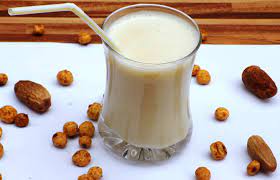
Vermonia Amygadalina, which is commonly known as bitterleaf has been one of God’s gifts to humanity. There are different names for bitter leaf in Nigeria. The Igbos call it onugbu; Yorubas called it Ewuro; Ibibio call it Atido, Tiv calls it Ityuna; in Edo, it is called Oriwo and Hausas call it Chusar doki.
Bitter leaf farming is a profitable agricultural venture in Nigeria that offers numerous economic and health benefits. Bitter leaf (Vernonia amygdalina) is a tropical plant native to Africa, particularly prevalent in West and Central Africa, including Nigeria.
Bitter leaf is rich in essential nutrients, including vitamins (A, C, and E), minerals (calcium, iron, and potassium), and antioxidants. These nutrients contribute to overall health, immunity, and disease prevention.
Bitter leaf has been traditionally used in Nigerian folk medicine for its numerous health benefits. It possesses antimicrobial, anti-inflammatory, and anti-diabetic properties. It aids in digestion, detoxification, and liver protection. Bitter leaf is also believed to have potential anti-cancer properties.
Bitter leaf is a key ingredient in Nigerian cuisine, adding a unique bitter taste to soups, stews, and sauces. It is often combined with other vegetables and protein sources to create flavorful dishes.
Its medicinal properties, culinary uses, and increasing demand in both local and international markets make it an attractive crop for farmers. This article serves as a comprehensive guide to bitter leaf farming in Nigeria, covering cultivation practices, plant requirements, harvesting techniques, and market opportunities.
Selecting Suitable Land and Climate
Bitter leaf requires a well-drained soil rich in organic matter. The soil pH should range between 6.0 and 7.0. The plant thrives in tropical and subtropical regions, preferring temperatures between 20°C and 30°C. It is crucial to select a location with abundant sunlight and protection from strong winds. Areas with an annual rainfall of 1,000 to 1,500 mm are ideal for bitter leaf cultivation.
Propagation
Bitter leaf can be propagated through seeds or stem cuttings. Seeds should be obtained from reputable sources to ensure good germination rates. Prepare a nursery bed by mixing fertile soil with organic compost. Sow the seeds at a depth of 2 cm and maintain adequate moisture levels. Germination typically occurs within 7 to 14 days. For stem cuttings, select healthy, disease-free shoots from mature plants and plant them directly in the main field after treating the cut ends with rooting hormones.
Land Preparation and Planting
Prepare the land by clearing any weeds and debris. Plough or till the soil to a depth of 15 to 20 cm to ensure good aeration and nutrient penetration. Incorporate well-rotted organic matter, such as compost or farmyard manure, to enhance soil fertility. Mark out planting rows or beds, leaving sufficient spacing between plants (approximately 60 cm apart). Transplant the seedlings or stem cuttings during the rainy season or irrigate immediately after planting.
Crop Management
a) Watering: Bitter leaf requires adequate moisture for optimal growth. Irrigate regularly during dry periods to maintain soil moisture levels. However, avoid waterlogged conditions as they can lead to root rot and other diseases.
b) Mulching: Apply organic mulch around the plants to conserve soil moisture, suppress weed growth, and improve soil fertility. Mulching also helps maintain a uniform soil temperature.
c) Fertilization: Conduct soil tests to determine the nutrient requirements of the crop. Bitter leaf benefits from regular application of organic or inorganic fertilizers. Apply nitrogen-rich fertilizers during the vegetative stage and switch to potassium-rich fertilizers during flowering and fruiting.
d) Pest and Disease Control: Common pests affecting bitter leaf include aphids, caterpillars, and leaf miners.
Common Pests in Bitter Leaf Farming
Aphids: Aphids are small, sap-sucking insects that can cause stunted growth and leaf curling. They excrete honeydew, leading to the growth of sooty mold.
Caterpillars: Caterpillars feed on the leaves, resulting in defoliation and reduced photosynthesis. The most common caterpillar pests in bitter leaf farming include armyworms and cutworms.
Whiteflies: These tiny insects cause yellowing and wilting of leaves, along with transmitting viral diseases.
Leaf miners: Leaf miners create tunnels within the leaves, causing them to dry and become distorted.
Snails and slugs: These mollusks feed on tender leaves and can cause extensive damage, especially during rainy seasons.
Major Diseases Affecting Bitter Leaf Farming
Bacterial leaf spot: Bacterial pathogens cause dark, water-soaked lesions on leaves, leading to premature leaf drop and reduced photosynthesis.
Powdery mildew: A fungal disease that results in a white, powdery growth on leaves, inhibiting photosynthesis and causing defoliation.
Leaf rust: Rust-infected leaves display orange to reddish-brown pustules, reducing the plant's vigor and productivity.
Root rot: This fungal disease affects the roots, leading to stunted growth, wilting, and eventual death of the plant.
Leaf blight: Caused by fungal pathogens, leaf blight causes dark, irregular lesions on the leaves, resulting in defoliation and reduced plant vigor.
Prevention and Management Strategies
Cultural practices: Implementing good agricultural practices such as crop rotation, proper spacing, and adequate weed control can help reduce the occurrence of pests and diseases.
Early detection and monitoring: Regular scouting and monitoring of the bitter leaf farm are crucial to identify pest and disease outbreaks at an early stage, enabling timely intervention.
Biological control: Encouraging beneficial insects, like ladybugs and lacewings, can help control aphid populations. Additionally, the use of microbial agents, such as Bacillus thuringiensis, can effectively manage caterpillars.
Chemical control: Judicious use of appropriate insecticides, fungicides, and nematicides can help control pests and diseases. However, caution should be exercised to minimize environmental impact and ensure adherence to safety guidelines.
Disease-resistant varieties: Planting disease-resistant bitter leaf varieties can significantly reduce the impact of diseases and enhance crop resilience.
Proper sanitation: Removing and destroying infected plant debris can prevent the buildup of pests and diseases.
Integrated Pest Management (IPM): Adopting IPM practices, including a combination of preventive measures, biological control, and chemical control, can provide effective long-term management solutions.
Harvesting and Post-Harvest Management
Bitter leaf can be harvested within three to four months after planting. The leaves are typically harvested individually as needed, or the entire plant can be cut back to encourage regrowth. Select healthy, mature leaves, avoiding damaged or diseased foliage. Proper post-harvest handling involves immediate washing, packaging, and storage under cool and humid conditions to maintain freshness.
Market Opportunities
Bitter leaf farming presents numerous market opportunities in Nigeria and beyond. The leaves are in high demand for their culinary and medicinal uses. Locally, bitter leaf is a popular ingredient in soups, stews, and traditional medicine.
The global market also offers export potential for bitter leaf products, including dried leaves, extracts, and dietary supplements. Collaborating with local markets, restaurants, herbal medicine practitioners, and pharmaceutical companies can help farmers tap into these opportunities.
Conclusion
Bitter leaf farming in Nigeria is a viable and lucrative venture. With the right land, suitable climate, and proper cultivation practices, farmers can reap the economic rewards of this highly sought-after crop. By following the detailed guide provided in this article, aspiring bitter leaf farmers can establish successful operations, contribute to the local economy, and meet the increasing demand for bitter leaf products both domestically and internationally.






















